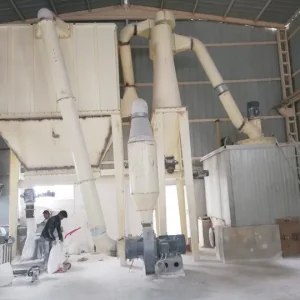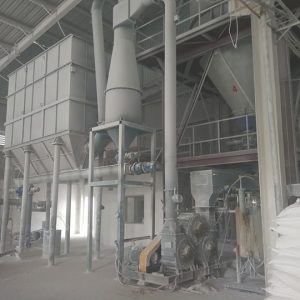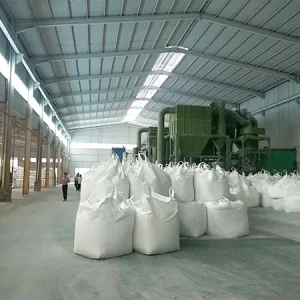Calcium carbonate is a widely used mineral compound with various industrial applications. To meet the demand for finely ground calcium carbonate, advanced milling technologies have been developed. One such technology is the calcium carbonate vertical roller mill. This article provides an in-depth exploration of the calcium carbonate vertical roller mill, discussing its definition, operating principles, advantages, and disadvantages.
Definition and Operating Principles:
A calcium carbonate vertical roller mill is a specialized equipment designed for grinding and processing calcium carbonate into fine powder. It consists of a vertical roller system that rotates on its axis, enabling efficient and precise grinding of the material. The calcium carbonate feed material is fed through a central inlet, and the centrifugal force generated by the rotating rollers grinds the material against the grinding table or track. As a result, the calcium carbonate particles are finely ground and classified to achieve the desired particle size distribution.
Advantages of Calcium Carbonate Vertical Roller Mills:
- High Grinding Efficiency: Vertical roller mills utilize a combination of compression and shear forces to efficiently grind calcium carbonate particles. The grinding process is conducted in a confined space, ensuring thorough grinding and reducing energy consumption.
- Enhanced Particle Size Control: Vertical roller mills offer excellent control over the particle size distribution of the ground calcium carbonate. The adjustable rotor speed, grinding pressure, and classifier settings allow for precise control and customization of the final product’s particle size.
- Wide Range of Application: Calcium carbonate vertical roller mills can handle various types of calcium carbonate, including both natural and synthetic forms. They are suitable for grinding materials with different hardness levels, moisture content, and abrasiveness.
- Reduced Maintenance Requirements: Vertical roller mills have a relatively simple design and fewer moving parts compared to traditional grinding mills. This results in reduced maintenance needs, lower downtime, and decreased associated costs.
- Space-Efficient Design: Vertical roller mills typically have a compact footprint, making them suitable for installations with limited space. They can be easily integrated into existing production lines or used as standalone units.
Disadvantages of Calcium Carbonate Vertical Roller Mills:
- Initial Investment Cost: The initial investment cost of a calcium carbonate vertical roller mill is relatively higher compared to other grinding equipment. However, the long-term benefits and cost savings achieved through improved efficiency and reduced maintenance can offset this initial investment.
- Limited Coarse Grinding Capability: Vertical roller mills are primarily designed for fine and ultra-fine grinding applications. They may have limitations in efficiently grinding coarse particles due to the nature of their operating principles and design features. Additional size reduction steps or alternative equipment might be required for processing large particles.
- Sensitivity to Material Characteristics: Certain material properties, such as hardness, moisture content, and abrasiveness, can affect the performance of calcium carbonate vertical roller mills. Optimal operational parameters and adjustments may be necessary to achieve desired grinding results for specific materials.
- Potential for System Overload: In cases where the feed material contains impurities or hard particles, there is a risk of overloading the vertical roller mill system. This can result in reduced grinding efficiency, increased wear and tear on the equipment, and potential disruptions in production.
A calcium carbonate vertical roller mill offers several advantages, including high grinding efficiency, enhanced particle size control, wide application range, reduced maintenance requirements, and space-efficient design. However, it is important to consider the initial investment cost, limited coarse grinding capability, sensitivity to material characteristics, and potential for system overload. Understanding these advantages and disadvantages helps in evaluating the suitability and economic viability of a calcium carbonate vertical roller mill for specific grinding applications.
- Ring roller mill for for dry grinding of Calcium Carbonate
- What is the difference between vertical mill and ring roller mill?
- What is a Calcium Carbonate Vertical Roller Mill?
- Unleashing the Potential of Ring Roller Mill: A Revolutionary Solution for Efficient Material Processing
- How Kaolin Affect Mechanical Properties of Rubber


